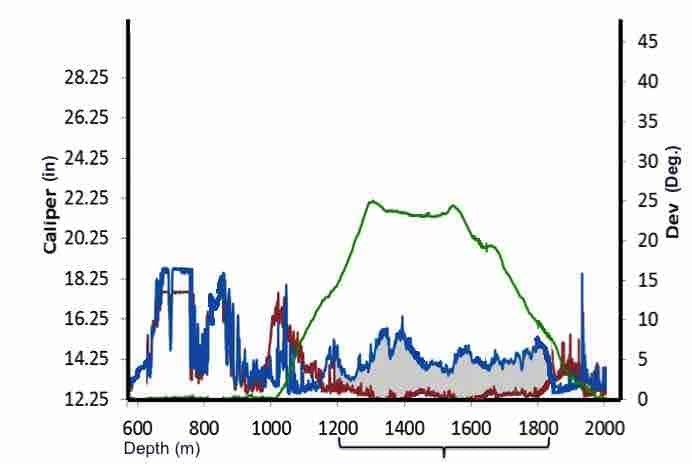Influx zone characteristics
These wells may show high dogleg severity in the intermediate section. Depending on the type of formation drilled across, there could be a tendency to form sort of keyseats, not only low side but also high side. They tend to get worse with additional drill string work, such as trips, reaming or circulation. By the time the casing is run and cementing is the next activity, the cross-sectional shape around these areas could have become ovalized.
An oval-shaped hole, depending on the length of the affected section, presents many problems. It’s much harder to achieve the objectives of the primary cementing operation. It becomes particularly challenging if there are losses or influx zones (or both) involved.
Some of the negatives effects are:
- Higher ECD.
- Increase of channelling.
- Impaired casing centralisation.
The effect on the cement coverage can be massive.
Cementing simulators affected
However, for us cementing engineers, the main difficulty comes from the inability of the simulator to compute an ovalized hole. The simulator works only with a circumferential wellbore. Even if you input a 4-arm caliper, the measurements are worked out as an effective circumferential hole diameter.
In practice, an ovalized hole section creates a condition called geometrically-induced channeling, which alters the annular velocity profile in the resulting annular space. This extends the low velocity or no flow area in the enlarged narrow side and forces the fluid to go along the wide side.

The red zone highlights the gap with lower or zero annular velocity, in a circumferential vs an ovalized hole with a casing.
Ultimately, an ovalized hole would produce a smaller flow area forcing fluids to travel faster in the annulus, but not being able to displace the mud in a larger section of the annulus.
Below is an example of an ovalized s-shaped 12 ¼” section.

The green line shows the deviation building to a maximum of almost 25 deg, and then returning to vertical (S-Shaped). From 1200 to 1800m the caliper readings are continually showing a max and min values. This is a clear indication of an ovalized hole. The effect on the final log is dramatic.
As a cementer, you are required to isolate a possible influx zone at 1600m, What can you do?
USE OF LCM THROUGH FLOAT EQUIPMENT BEFORE CEMENTING
Was the cement job good or bad?
Cheers,
L. Diaz

Leave a Reply